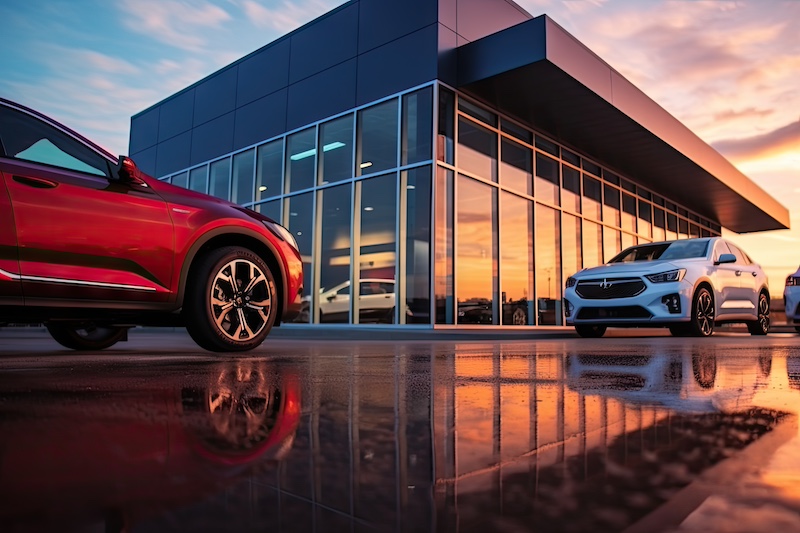Why this matters to Honda dealers
We have received reports from our Honda dealer clients that Honda has altered its system for assigning planning volume goals to its dealers. Historically, Honda issued planning volume objective(s) to its dealers on an annual basis. However, dealers are now receiving updated planning volume objectives on a quarterly basis. Why is this important to Honda dealers? Among other reasons, a dealer’s planning volume is integral to Honda’s calculation of the dealer’s facility requirements and meeting planning volume is critical to receiving the highly sought-after President’s Award.
Let’s take a step back and look at the definition of a dealer’s “planning volume.” Planning volume is generally understood to be the number of new vehicles a dealer is expected to sell within a given period of time. Typically, a dealer’s planning volume is set annually by the manufacturer based upon the manufacturer’s assessment of the availability of product and the sales opportunity available within the dealer’s market area.
In contrast, a dealer’s expected sales performance is the number of vehicles a dealer must sell in order to equal the manufacturer’s sales standard, which is generally based upon the performance of other same line-make dealers within the dealer’s zone, the dealer’s state, the dealer’s region or nationally. Expected sales performance is a function of the performance of other dealers and is typically assigned as a percentage of the average performance within the designated territory (i.e. 90% of same line-make dealers sales performance in the state).
Dealers must pay attention to the manufacturer’s assignment of “planning volume” for several reasons, not the least of which is that facility guidelines are based in large part on planning volume. Manufacturers use planning volume to determine the amount of showroom space, service space, parts storage space, service stalls, customer parking space, inventory parking space and overall acreage a dealer must have to properly accommodate expected sales and service customers.
Obviously, if planning volume is being ratcheted up a dealer could unknowingly set himself up for a new “minimum” facility requirement. In addition, if a dealer’s planning volume is not consistent with the realistic sales expectations for the dealership, the manufacturer is likely using the planning volume to demand that the dealer unnecessarily expend precious capital to meet arbitrary facility requirements. In some cases, the dealer may not be able to meet the manufacturer’s facility requirements without moving to a larger parcel of land. If suitable land can be found, the dealer will undoubtedly experience a higher monthly overhead.
Honda’s move to quarterly planning volume objectives is troubling for its dealers in that the increase is coming more often and is coming in significant percentages. In fact, it appears that Honda is penalizing its high performing dealers by continually increasing those dealers’ planning volume. Honda views a dealer’s increased sales volume in the prior quarter as an indication that the dealer is capable of selling even more cars the next quarter. But, for the dealer whose sales are flat or declining, Honda presumes a lower planning volume for the next quarter. Honda’s calculation of planning volume is clearly unfair and becomes an unattainable goal for its highest performing dealers.
Honda dealers tell us that one very important result of meeting planning volume is being eligible to receive Honda’s President’s Award. Dealers informed us that the morale of dealership’s personnel is impacted by the dealership receiving the award and that the award is a critical component of their advertising campaigns.
As you have read repeatedly in this column, dealers who don’t believe their assigned planning volume is reasonably attainable must respond to their manufacturer in writing objecting to the planning volume. Dealers should request the details of how the manufacturer arrived at the dealer’s planning volume and then respond to any component of the manufacturer’s formula that is erroneous.
GM franchise buy-sell activity picking up
Since the “old” General Motors sold its assets to the “new” GM, the dust has begun to settle somewhat with regard to which dealers are remaining in the market and which appear to be going away. Even with dealers who are going forward with GM, we are beginning to see an interest by some in selling their GM franchises. As has been printed here and elsewhere, during the bankrupcty proceedings old GM offered (as part of the reorganization of the GM dealership network) “participation agreements” to dealers with whom the new GM desired to continue to do business after the bankruptcy sale. These agreements set out new rules and guidelines by which these retained dealers were required to operate as a member of GM’s dealership network. In particular, the participation agreements required dealers to agree to comply with undisclosed requirements with respect to image and facility. GM is finally getting around to sharing with its dealers these image requirements, as GM field representatives contact dealers to discuss GM’s expectations as to both image and facility.
Over the last few weeks, our dealership transactions partner, Robert Bass, has seen an increase in GM dealership buy-sell activity, with both sellers and buyers coming to us for representation. In structuring these dealership buy-sells, we have stressed the importance of understanding GM’s dealership network initiatives. These initiatives, found most recently in GM’s Essential Brand Elements incentive program, will impose financial burdens on a dealer, and, as a consequence, will affect the economics of a transaction.
GM’s EBE incentive program contains a major emphasis upon facility image, facility size and exclusivity. Putting aside for the moment whether state franchise laws will limit GM’s efforts in this regard, a buyer of a GM franchise must factor in the expected cost of changes to the dealership facility in order to qualify for the EBE incentive monies. Without the incentive monies, the buyer could be placed a competitive disadvantage against a dealer in the market, which does qualify for the EBE incentives. GM is sending out its designated architectural firm to meet with dealers and begin the process of drawing up plans, which will result in a qualifying facility. If the potential buyer intends to keep the franchise at its current location, he or she should ask to review any facility plans that have been approved by GM or, if no such plans have been created, have GM’s architectural firm perform a review of the facility and provide preliminary expectations for the facility. Likewise, if the potential buyer intends to relocate the GM franchise then it is imperative that he or she have a clear understanding of what GM will require at that facility.
Apart from quantifying the cost of any required facility renovations, a buyer must be careful in agreeing to purchase certain dealership assets such as furniture and signage. GM’s new image requirements may render the furniture or signage obsolete.
GM’s image/facility elements should be considered by both seller and buyer. When setting their price, sellers should be realistic and take into account GM’s image/facility costs; buyers will bear the burden of those costs and therefore they should build that cost into the price set out in their purchase offers. Understanding GM’s image plans at the outset of buy-sell discussions will contribute to productive negotiations. The parties will quickly learn what they can and cannot live with in regard to the change in economics as a result of GM’s image/facility plans. Early discussions will help to minimize disagreements later during the buy-sell process.







